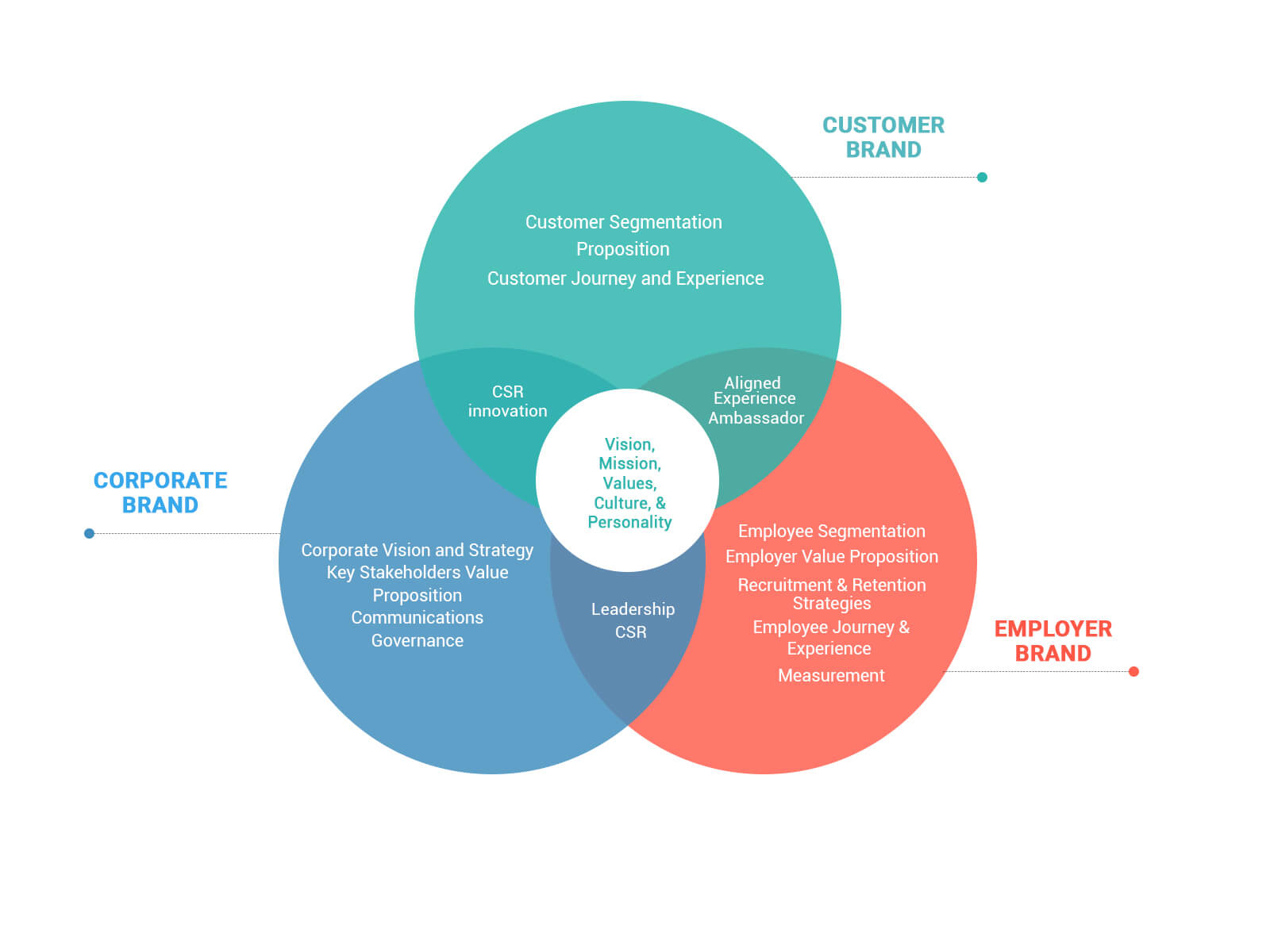Every year organizations across the globe spend billions of dollars to cultivate and build their brand, unfortunately, sometimes the message is lost in communication. Your brand perception boils down to what people think, what people say about your organization. This is just one part of the problem; the other challenge is that there are three different end-users of this message or the brand communication.
- Corporate Brand – Focused on Stakeholders
- Customer Brand – Focused on Consumers and Prospects
- Employer Brand – Focused on Employees and Candidates

The corporate brands talk to a wide range of stakeholders: investors, governments, local communities, trade unions but also increasingly to consumers and customers who want to know who they buy from. Primarily organizations with multiple products/ consumer brands (such as Unilever, Proctor & Gamble) have a different corporate and consumer brand.
The consumer brand is the public face of the organization – it talks to the customers and consumers who buy and use the organization’s products or services. It is the most common understanding of what a brand is and relates to the product that is being sold to the consumer.
The employer brand, however, addresses a completely different audience. It is all about employee experience — what it feels like to work in the organization, the benefits and perks they can enjoy, the culture they can experience, and career development opportunities they can leverage. It both summarizes and details employees’ interactions with the company and can be communicated through multiple spokespersons (recruiters, hiring managers, employees) and channels (print, website, digital and social).
What unifies the Corporate Brand and the Employer Brand is the organization’s vision, mission, values, culture, and personality. The employer brand needs to be subset of the overall marketing communication. The Corporate Brand is the driver, and the Employer Brand must align closely to the critical elements of the corporate brand and contextualized to cater to the employees and the candidates.
On the contrary your Employer brand is what your employees and applicants perceive about your brand. The Employer brand communication must include the fundamental reason of your organization’s existence and give your employees and prospective candidates a reason to work in the company.
The employee experience that delivers against the brand promise to its employees is designed across the employee journey or life cycle: from when they’re not even thinking about being an employee to recruitment, selection and on-boarding; through the working experience (culture, managers/mentors, internal and change management communications, working environment, CSR opportunities); leadership, performance and training; to off-boarding. Every touch point should reflect the brand promise.
A positive employer brand communicates that the organization is a good employer and a great place to work. Employer brand affects recruitment of new employees, retention and engagement of current employees, and the overall perception of the organization in the market.
Unfortunately, how a brand is perceived is something that you cannot control, you can only influence this. A non-negotiable requirement is that the corporate and employer brands cannot work in isolated vacuums. They would then run the risk of conveying contrasting messages that serve to engage neither the external nor internal stakeholders. When executed correctly, both brands can immensely benefit and be magnified by the other. A consumer of your product today can be a prospective candidate.




